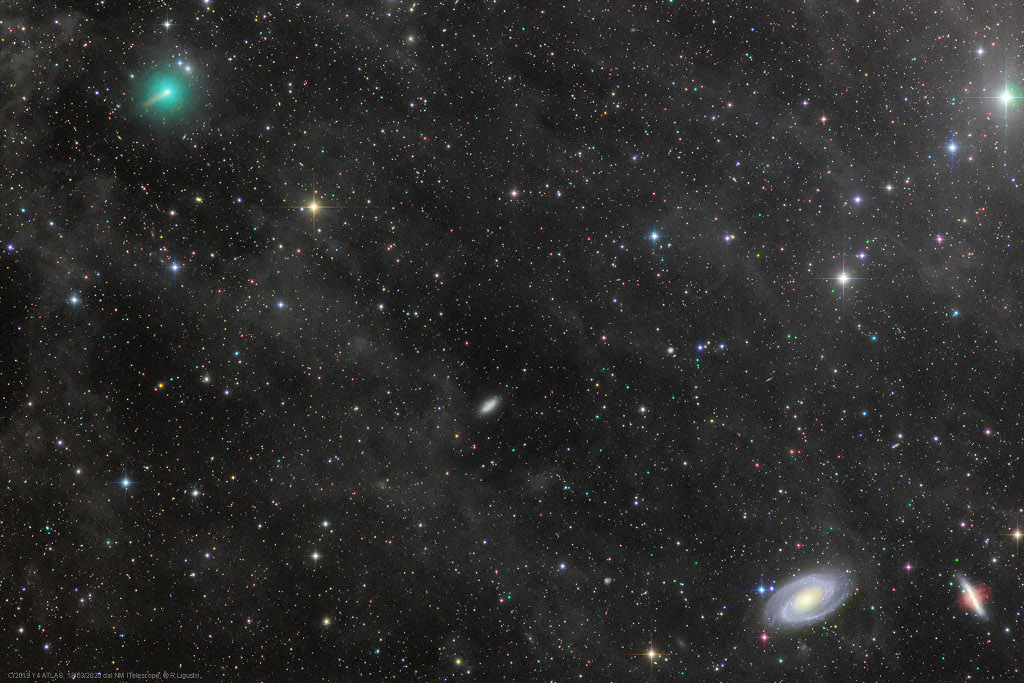2020 March 21
Comet ATLAS and the Mighty Galaxies
Image Credit & Copyright: Rolando Ligustri (CARA Project, CAST)
Explanation: Comet ATLAS C/2019 Y4 was discovered by the NASA funded Asteroid Terrestrial-impact Last Alert System, the last comet discovery reported in 2019. Now growing brighter in northern night skies, the comet’s pretty greenish coma is at the upper left of this telescopic skyview captured from a remotely operated observatory in New Mexico on March 18. At lower right are M81 and M82, well-known as large, gravitationally interacting galaxies. Seen through faint dust clouds above the Milky Way, the galaxy pair lies about 12 million light-years distant, toward the constellation Ursa Major. In bound Comet ATLAS is about 9 light-minutes from Earth, still beyond the orbit of Mars. The comet’s elongated orbit is similar to orbit of the Great Comet of 1844 though, a trajectory that will return this comet to the inner Solar System in about 6,000 years. Comet ATLAS will reach a perihelion or closest approach to the Sun on May 31 inside the orbit of Mercury and may become a naked-eye comet in the coming days.
Tomorrow’s picture: moon down
阿特拉斯彗星与大星系
影像提供与版权: Rolando Ligustri ( CARA Project , CAST )
说明: 阿特拉斯彗星(C/2019 Y4),是由美国航太总署经费支持的“ 小行星撞地球最后警报系统(ATLAS)”所发现,也是2019年发现的最后一颗彗星。在这幅3月18日,由新墨西哥一座遥控天文台拍摄的望远镜影像里,这颗目前在北半球夜空中逐渐变亮的彗星,带着美丽的泛绿彗发出现在左上角。而影像的右下角的M81和M82,则是在进行重力互扰的著名大星系对。透过银河上方的昏暗尘埃云见到的这对星系,位在北天的大熊座方向,约1千2百万光年远之处。相较之下,朝太阳靠近、目前还在火星轨道外头的阿特拉斯彗星,离地球大约只有9光分。这颗彗星扁长的轨道和1844年大彗星很类似,大约每6,000年会回访内太阳系一次。阿特拉斯彗星会在3月31日,运行到近在水星轨道之内的近日点。在接下来的这段日子,它有可能成为裸视彗星。
明日的图片: moon down







